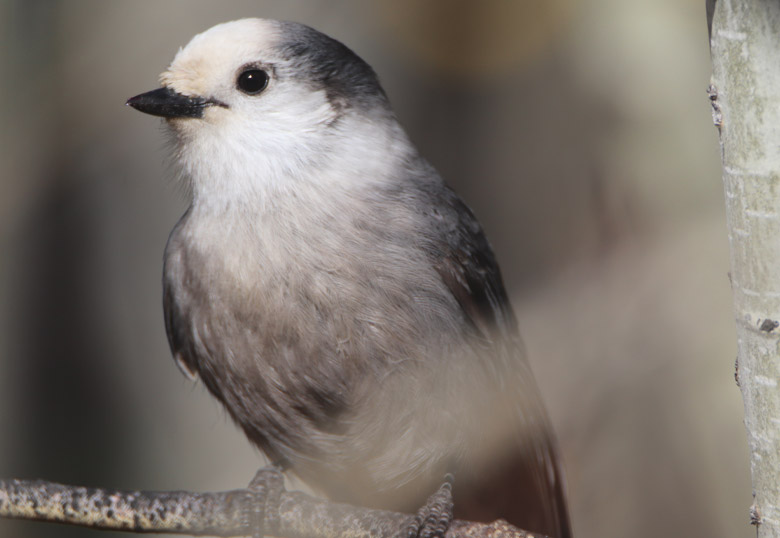Songbirds who make the arduous flight from their nesting sites in northern boreal forests to warm, southern climates in the winter may be rewarded for their journey with greater genetic diversity, according to a new study published in the journal Nature Ecology & Evolution. The study was co-authored by researchers from the University of Lethbridge, among others, and led by the University of Michigan (UM).

Researchers found that songbird species that migrate from the boreal forests of the northern United States and Canada to the tropics to overwinter have more genetic diversity than species who stick closer to their northern breeding locations, either not migrating or migrating only short distances, for example, to the southern United States.
“We spent years collecting samples from different species across Canada that were included in the study. Our lab has primarily been focusing on resident birds who do not migrate and found lower levels of movement or gene flow compared to migratory species,” says Dr. Theresa Burg, a professor in ULethbridge’s Department of Biological Sciences. “Two of the most remarkable findings are that some of the long-distance migrants show reduced gene flow and that levels of genetic diversity correspond to migration distance.”
Having high genetic diversity means that a population has a large breadth of gene variants both within individuals and within a species’ population. Genetic diversity can tell a story of a species’ evolutionary history: It shows how much genetic variation within the species has been maintained vs. lost because of greater population size fluctuation throughout history.
“Long distance migration has evolved to be a very successful strategy for birds because even though it’s difficult and requires extraordinary physiology, it allows them to spend the northern winter in a place where they enjoy a higher survival rate,” says lead author Benjamin Winger, associate professor of ecology and evolutionary biology and curator of birds at the University of Michigan’s Museum of Zoology.
"What our genetic diversity results likely mean is that these really long-distance migrants have had more stable populations over evolutionary history, which is amazing because they’re undergoing these phenomenal, risky migrations."
Migration, genetic diversity and gene flow
Scientists have been mulling migration’s impact on bird population genetics for a long time.
Winger and colleagues began sampling bird populations across the boreal forest for genetic research more than 15 years ago in hopes of eventually completing the study, and also used genetic samples from several museum collections, including the UM Museum of Zoology.
Many of the birds are closely related but have different migration strategies, Winger says. For example, hermit thrushes and Swainson’s thrushes are closely related species that breed in the same boreal region. But the hermit thrush spends the winter farther north, in the southern United States, and the Swainson’s thrush spends the winter in South America.
The researchers first examined the birds’ genomes to look at the impact of long-distance migration on gene flow. This was a challenge, says first author Teresa Pegan, who completed the work as a UM doctoral student, because across the boreal forest, the populations within each bird species were so closely related. They all lived in regions within the boreal forest, the mostly coniferous forest that encircles the globe in the northern hemisphere.

“The boreal forest covers about 60 per cent of Canada and comprises 75 per cent of Canada’s forests. Boreal birds mainly breed in Canada and parts of the northern United States and overwinter in South and Central America. Twice a year they migrate long distances between their breeding and wintering grounds. Using DNA data, we can get a better understanding of how much mixing occurs among breeding populations over long periods of time,” says Burg.
Any patterns the researchers expected to find were going to be subtle. To tease out these subtle differences, Pegan sequenced 1,700 genomes from the 35 species of birds. She then designed a computational analysis that allowed the researchers to search for genetic patterns within each species. These genetic patterns would help the researchers determine the birds’ gene flow, or movement of genetic variants across populations in the boreal forest.
“Are birds breeding in Alberta and Ontario part of the same population or are they different,” asks Burg. “This helps us better understand how populations are connected across their range, how changes in one geographic area can impact birds in another area and informs conservation strategies.”
Human impact and climate change
The researchers say their findings can help provide background information for conservation efforts to help these birds survive the pressures of climate change and human impact on their habitat. For example, their results show that some bird groups return to the same small part of forest each year to breed.
“The boreal forest throughout Canada and the United States experiences substantial pressure, not just from climate change, but from resource extraction,” says Winger. “Deforestation of boreal forest throughout the US and Canada is more severe than many people realize.
“We’re showing that some species probably have a lot of gene flow, so they probably have a lot of movement throughout the breeding range. But others really come back to the same patch of forest every year, and those might be more susceptible to deforestation. They may be less able to fly 15 kilometres away if they come back and their nesting site has been clear cut.”
The large collaboration included research co-authors from Environment and Climate Change Canada, Royal Alberta Museum, Cleveland Museum of Natural History, Spring Island Trust, New York State Museum and Colorado State University.
